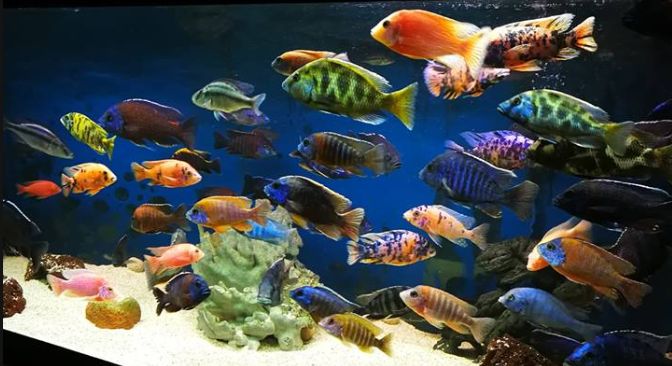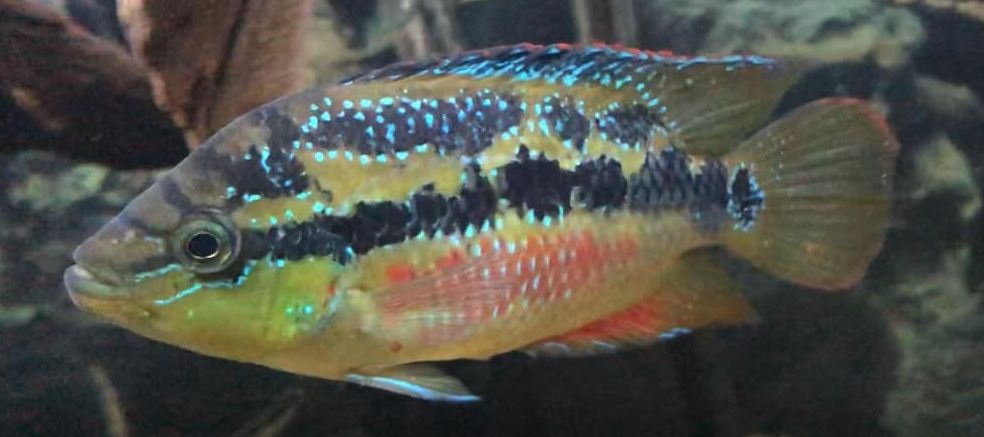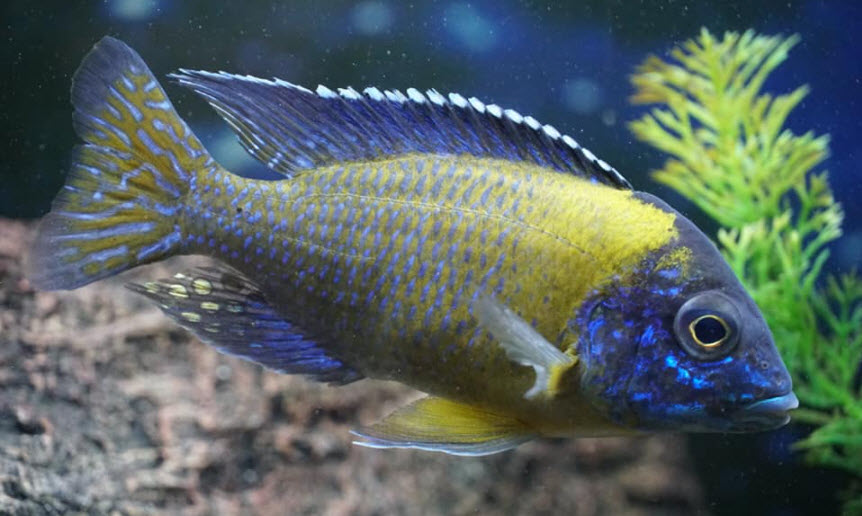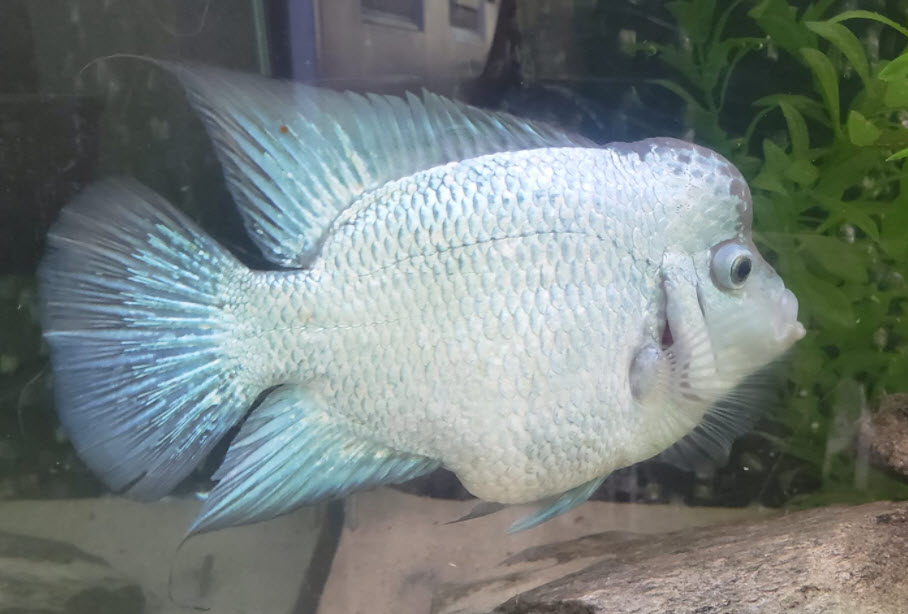
There are many medicines marketed for fish diseases which are properly termed antiseptics (other terms are disinfectants and anti-bacterials). These are frequently touted for use in fish for treating fish diseases.
The following antiseptics are commonly touted for treating fish pathogens:
- Glutaraldehyde (Paraguard)
- Hydrogen peroxide
- Peracetic acid (MinnFinn)
- Potassium permanganate (UltraClear)
- Potassium peroxymonosulphate (Virumor)
- N-halamine (Marineland All-in-One, Tetra Lifeguard)
- Chloramine T (Wipeout)
- “Stabilized oxygen chlorine” (Fritz Maracyn® Oxy)
- Sodium Chlorite (NaClO2)
They all have been touted as being good to use in solution in a hospital aquarium, dips, baths or as a swab to treat a fish. These antiseptics will kill disease organisms and can be used to treat diseases, with some huge reservations.
The problem is that these are all non-selective cell killers. So, while they will kill disease organism cells, they will also kill cells in the fish’s gills. A disinfectant works by denaturing proteins in any living cell exposed to it. These living cells include bacteria, ich trophonts, parasites, plant leaves and fish gills. So one has to be very cautious using these. Enough to kill the pathogen but not enough to kill the majority of the cells in the fish’s gills. Follow the directions closely. Never double down on the dosage. More is NOT better.

The website of the supplier of potassium permanganate (UltraClear) says the following about their product:
“It should be noted that repeated treatment with potassium permanganate can lead to cumulative gill damage. Harmful/lethal doses are only slightly higher than therapeutic doses of potassium permanganate, so dosages must be carefully followed when treating fish with this chemical or fish could die. Toxicity increases as pH increases. Overdosing will cause coagulative necrosis. The tips of the fish’s fins will turn white. It should be known that Potassium Permanganate has been shown to kill nitrifying bacteria.”
This is what a supplier of an antiseptic says! Antiseptics are compounds which kill all living cells they can penetrate, regardless of the species, in high enough concentrations. All antiseptics have several problems:
- They will burn exposed living tissue. All antiseptics are damaging to the gills of the fish. It is the equivalent of a human breathing an aerosol of an antiseptic into the lungs of humans. Such an action could be deadly to humans.
- Antiseptics can do more harm than good another way. They denature a fish’s natural antibodies and defenses against any pathogen.
- Human doctors have stopped recommending the use of any antiseptics on human wounds because they burn exposed living tissue (like the gills of a fish!) and they interfere with the body’s defenses against bacteria. They now recommend triple antibiotic ointment for treating minor wounds.
- Antiseptics have no effect on sub-surface internal bacteria which are doing the deadly damage to the fish. Fish die from diseases like fin rot not because their fins rot off, but because the bacteria is also attacking internally.
- Antiseptics will rapidly damage or kill fish if an overdose is applied.

Antiseptics in precisely the therapeutic dose will do the following:
- They will kill easily killed bacteria and pathogens in the water column in an aquarium.
- They will kill bacteria and pathogens exposed on the skin and the gills of the fish.
Several antiseptic medications marketed for ich have as an active ingredient 1-chloro-2,2,5,5-tetramethyl-4-imidazolidinone (Marineland All-in-One, Tetra Lifeguard). This is what is called an N-halamine and is a close relative of chloramine. This is a compound designed to slowly release chlorine. Others (Wipeout) have the similar ingredient chloro(4-methylbenzene-1-sulfonyl)azanide which is called “Chloramine T”. It also slowly releases chlorine.
A similar antiseptic medication is “stabilized oxygen chlorine” (Fritz Maracyn® Oxy). There is no such chemical species as “stabilized oxygen chlorine”. It is probably Chloramine T or a similar compound and slowly releases chlorine gas.
So, we have three medications which release chlorine gas into the water to treat disease. On one hand we’re going to religiously neutralize the chlorine in tap water because it is so toxic and then we’re going to use medications which release chlorine? Again, this doesn’t make a lot of sense.
That being said, the halamines have been shown to be effective in treating gill disease in trout. This gill disease is caused by a gram-negative bacterium called flavobacterium (i.e. columnaris). So, like most antiseptics, this has some limited value. But the risks aren’t worth it when antibiotics are much more effective and much safer.

Potassium permanganate is an oxidizer just like hydrogen peroxide. It is used in koi ponds for trichodina. The so called “nascent” oxygen released by permanganate and peroxides only kills some easily killed bacteria and pathogens in the water column and on the fish. At high enough concentration permanganate and peroxide will kill cells in the fish’s gills, just like all the other antiseptics. Again, why use it when antibiotics and other medications are much safer and much more effective?
Now if one is in Europe or Canada these type of chemicals are the ONLY option one has to treat diseases. So hobbyists in those areas have no choice but to use the disinfectants (assuming they can’t locate any left over human antibiotics).
The various modern drugs (antibiotics, metronidazole, Fenbendazole, etc.) recommended elsewhere for the various fish diseases are selective killers of pathogens. They will not damage fish tissues like the gills.
Note that antiseptics are used to prevent eggs from going “bad”. They will stop fungi and bacteria with little damage to the eggs as the eggs don’t have gills. Antiseptics also have use as “drugs of last resort” when fish are being killed by a pathogen which isn’t responding to the normal medications.

Return to Treatments Menu
Return to Ineffective Treatments Menu
.
Aquarium Science Website
The chapters shown below or on the right side in maroon lead to close to 400 articles on all aspects of keeping a freshwater aquarium. These articles have NO links to profit making sites and are thus unbiased in their recommendations, unlike all the for-profit sites you will find with Google. Bookmark and browse!
.

Leave a Reply